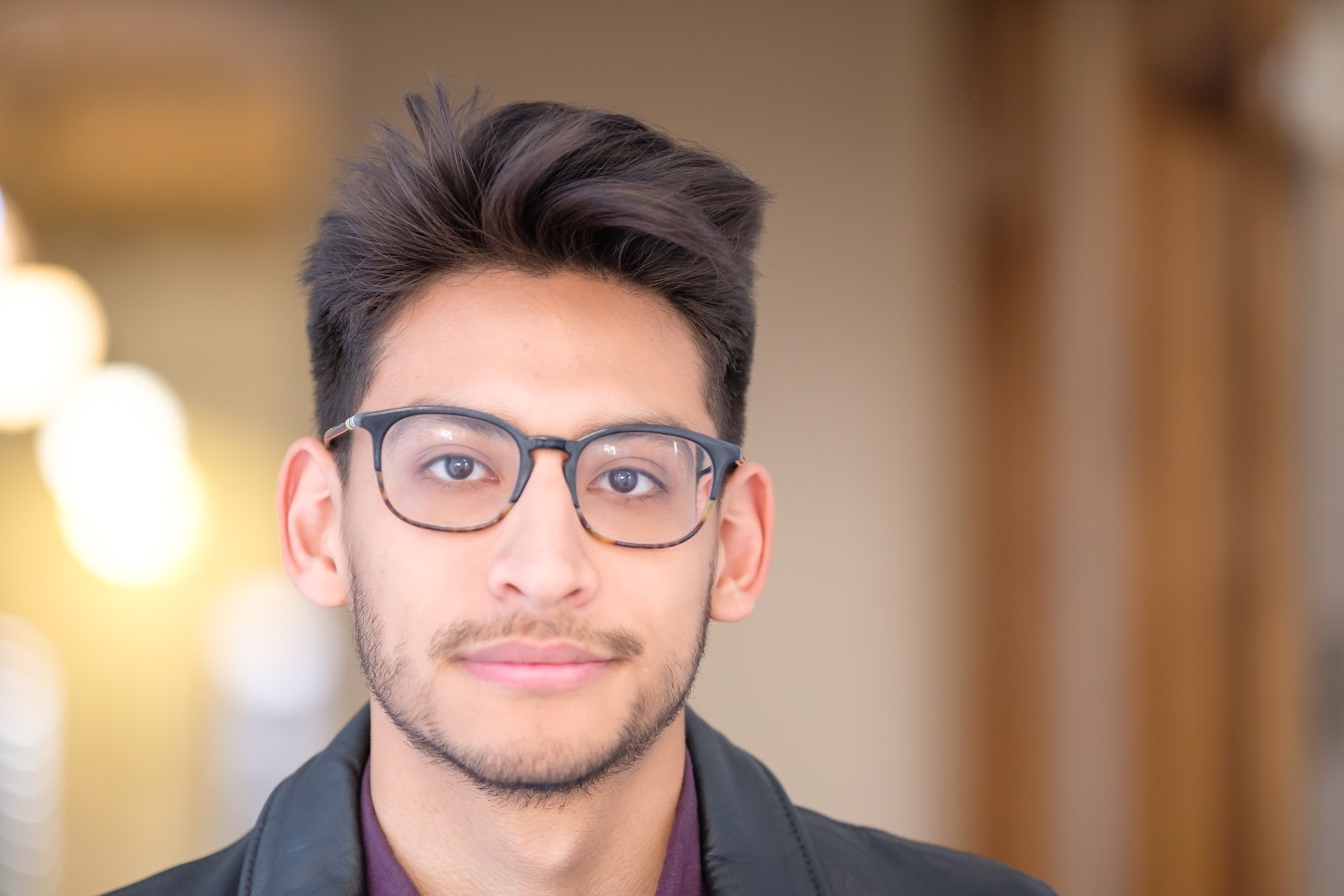
Luis Rufino, a senior who will graduate with a degree in physics, has overcome many academic challenges at the U. His efforts were rewarded when he received the College of Science Outstanding Undergraduate Student Award.
“When I first heard the news, I was surprised because I didn’t feel I deserved it, even though I’ve worked hard,” he said. “Maybe I’m suffering from the imposter syndrome, and I’m still questioning my abilities, but winning the award gave me reassurance that I’ve been successful in achieving my goal of improving as a student.” As a freshman at Salt Lake Community College, Rufino didn’t have a promising start. When he transferred to the U, his GPA was low. He was worried that he wouldn’t be able to keep up or survive upper-division physics classes.
“I knew that I wanted to attend graduate school, which meant that I had to improve in my physics classes and also get some research experience,” he said. “Throughout my academic career at the U, I’ve tried to do my best and still find time for research. A physics degree is already quite challenging and wanting to do research on top of that added another layer of stress and difficulty.” Rufino thinks that one of the most important skills he learned at the U was how to manage school, research, and everything else that life throws at an undergraduate. He’s also learned how to bounce back from failure, especially in research.
His research is focused on exploring new physics to describe dark matter—the particles that gravitationally bind galaxies and clusters of galaxies together. The Standard Model of particle physics is the theory that explains how the most elementary particles interact with each other and combine to form composite objects, like protons and neutrons. Developed over the course of many decades, what we know today as the Standard Model was formulated nearly half a century ago and remains a focus of study for particle physicists. By itself, the Standard Model fails to provide an explanation for many important phenomena, such as the existence of dark matter in the universe.
Theoretical physicists have begun to think of a new group of particles that can potentially describe dark matter. These theoretical particles are called the Supersymmetric Standard Model, which suggests that a “cousin” or partner particle may exist for every fundamental particle in the Standard Model. One of these partner particles has the potential of being the mysterious dark matter particle.

But how do we find these partner particles? Whenever two particles interact with each other, they emit light and other particles. The same thing happens when two dark matter particles find each other. The light observed from these dark matter interactions can tell us about the dark matter characteristics. Rufino works on investigating the light originating from possible dark matter interactions from dwarf galaxies. He enjoys the research because it allows him to explore new ideas that have the potential to change much of what we know about physics.
He became interested in physics as a kid by watching pop-science movies, science cartoons, and superhero movies “I’d watch Jimmy Neutron, Dexter’s Laboratory, Spiderman, and Cosmos: A Spacetime Odyssey, with Neil deGrasse Tyson,” Rufino said. “I have to give Neil deGrasse Tyson all the credit for my passion for physics. After the first or second episode, I was convinced physics was what I wanted to study, especially astronomy. Of course, now I’m more passionate about discovering new physics.”
His favorite professors in the department have been Dr. Tugdual LeBohec, Dr. Charlie Jui, and Dr. Pearl Sandick. He enjoys the way Dr. LeBohec incorporates history into a lecture before getting into physics. Dr. Jui empathizes with students in their struggles to master complex concepts. He remembers the late nights, the constant stress, and, sometimes, the nightmares that physics students experience. Dr. Jui’s ability to connect with students made Rufino feel at ease in taking his class.
Dr. Sandick has been the most influential person in Rufino’s life and academic career. “She is a person I strive to become, and I’m very grateful to have her as my research advisor,” he said. “The number of research opportunities that are available in the department is amazing and critical to development as a student or researcher. Even if you decide not to pursue graduate school, you will be a stronger candidate in the job market after completing a physics degree at the U.”
When he isn’t studying, he likes to run, play soccer, rock climb, and hang out with friends. Currently, he’s training for his second marathon.
After five years of endless toil, Rufino plans to take a gap year between graduation and graduate school. He wants to spend more time with the people he cares about and explore hobbies, such as working with leather goods, building mechanical keyboards, and playing video games. After his gap year, he will begin graduate studies at Syracuse University.
